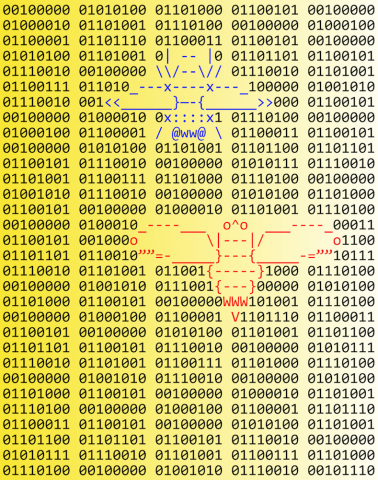All Bees Report to the Dance Floor
Back in the late 1990s, there was a quirky band called Servotron. In my opinion, they are quite forgettable, but one of their songs finds its way into my head from time to time – not because of its quality or its tune, but just because of the images the title evokes. They called it, “All Robots (Report to the Dance Floor).” Every time I think about it, I conjure up mental images of mechanical beings gyrating to the beat of electronic dance music. In my head, they step, bend, twist and execute all sorts of inorganic-looking moves. It’s chaos.
Bees are not robots, but bees dance. Their music is entirely their own and scientists have only begun to understand its genius. Bees also have a very sophisticated form of intelligence built into their dances. It is the type of intelligence that only works when large numbers of individuals participate. It is a collective effort—a hive behavior, if you will. This is where the robots come in. Stay with me here.
Worker bees in a hive must constantly forage. To survive, a hive needs a safe place to nest, adequate food, and fresh water. Conditions around any hive’s home are subject to change due to weather patterns, changes in foliage, and even incursions into their territory by mankind or other wildlife. It’s a never-ending challenge.
Fortunately for us humans, bees are up to this challenge. Were bees to exit our planet by means of extinction, humans would be in big trouble. Bees are primary pollinators for many of the foods we eat. They are near the root of our food chain and critical to everything humans need to live.
How do they do it? They dance. Workers fan out from the hive daily to look for supplies. They return and “tell” the other bees all about their expeditions. They do this using a complex series of movements called the waggle dance. It’s dark inside the hive. The other bees can’t really see the dancer. Instead, scientists speculate, they listen to the sounds the dancer makes and feel the dancer’s body with their antennae, all the while interpreting the rhythmic and mysterious movements. A message emerges.
From the dance, the observing bees learn what the forager has found, how far away it is, in which direction it lies, and the relative quality of the find. Some of the watchers get excited and join the dance, mimicking the patterns of the original dancer. More bees notice. Word gets around.
Armed with new information, the hive dispatches workers to the newly found treasure trove. From there, they form a swarm and begin gathering the nectar, water or tree resin they need for day-to-day survival. But they don’t stop there.
From the new location, more scouts are dispatched, more treasures are found, more dances are performed, and more workers catch the groove. It goes on and on. In this way, bees can efficiently forage for and find all they need—and more. Another boon for us humans on the sidelines is honey. Bees make more than they need, so we scoop up the charitable excess. Thanks again, bees.
The process is so efficient that computer scientists have picked up on it and emulated it in software systems. If you want to go down a veritable rabbit hole on the Internet, do a search for “bees algorithm” or “honey bee algorithm” and carve out an afternoon for some fascinating reading. It turns out that the bees are on to something—something that humans have found useful for all sorts of information processing applications.
So, what happens if we take that a little further? What happens if we arm some of our other, more public technology with this foraging weapon forged in the fires of nature? What happens when we get thousands, millions or billions of programs or devices dancing for each other? What will they find? What will they tell each other? What will they learn? Will they decide to share their knowledge with us? Yes, I know that using a word like “decide” when talking about technology seems odd, but given the recent advancements in artificial intelligence, it seems not only likely that automated systems will make independent decisions, but inevitable.
If this article piqued your interest in speculation about what might happen if artificial intelligence, the bees algorithm, and mankind’s insatiable appetite for technology combine, you might enjoy the author’s novel entitled The Bit Dance. It is available from Amazon as a paperback or in Kindle format. You can find it and other work by Tilmer Wright Jr here: https://www.amazon.com/Tilmer-Wright/e/B00DVKGG4K/ref=dp_byline_cont_eb…
- Log in to post comments
